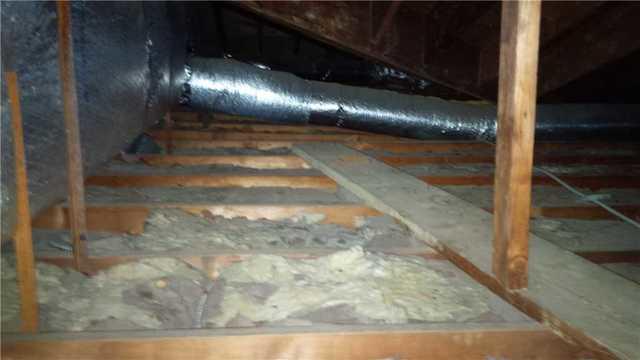
Attic Air Sealing
The first step for our team was to pull back the old insulation to locate ALL of the cracks, holes, and gaps that needed to be air sealed. We use a polyurethane expanding foam sealant to eliminate excessive air exchange between inside and outside.
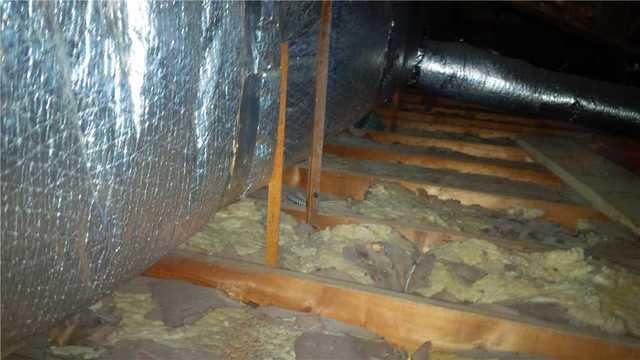
Eliminating the Moisture
When inspecting the attic we quickly noticed evidence of mold and moisture on the surface of wood planks and beams as you can see here. Our solution was to install a SaniDry system in order to keep this moisture from leading to wood rot. Our SaniDry models have the capacity to dehumidify a 2,500 sq. ft. space and can also remove mold spores and other particulate matter.

Rim Joist Insulation
The rim joist is another huge source of energy loss and is often overlooked when it comes to home insulation. At the rim joist, heat is lost by conductive transfer to the outside, and cold air freely enters the basement through joints and other gaps drilled in the sill plate for plumbing, electricity and fuel lines. We used an expanding polyurethane spray foam to seal these areas.
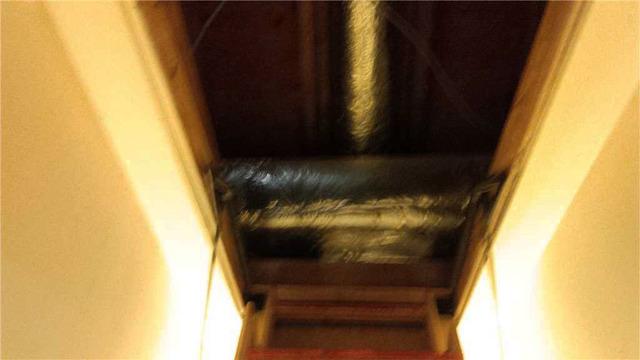
Hatch Cover
To seal the attic stairway, we installed our exclusive David Lewis Attic Hatch Cover. It provides easy access to the attic while insulating at R-20 and eliminating wasteful air leaks.

Duct Insulation
Your duct work system has an important job: distributing air that has been "conditioned" (heated or cooled) by your HVAC system throughout the house to keep your living space comfortable. You don't want this conditioned air to escape into your attic before it reaches the rooms below.
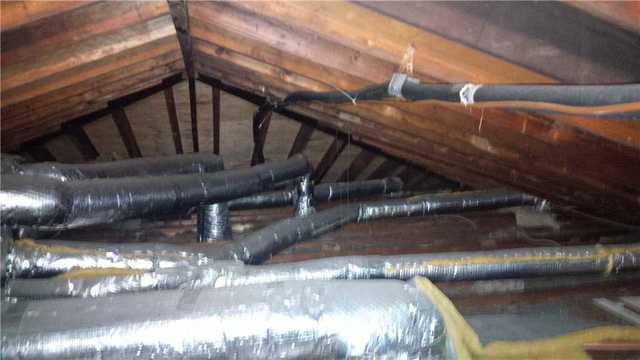
Ductwork Solutions
Ductwork can be insulated in a variety of ways to prevent unnecessary energy losses and increased utility bills. Here, a foil-faced blanket was wrapped around the duct and sealed with polyurethane spray foam.

Rockwool Insulation
Air was leaking through the fireplace masonry. Our team installed Rockwool insulation around the chimney in the attic and air sealed it. Rockwool can withstand temperatures up to 2000 degrees Fahrenheit, making it an ideal choice for chimney masonry.
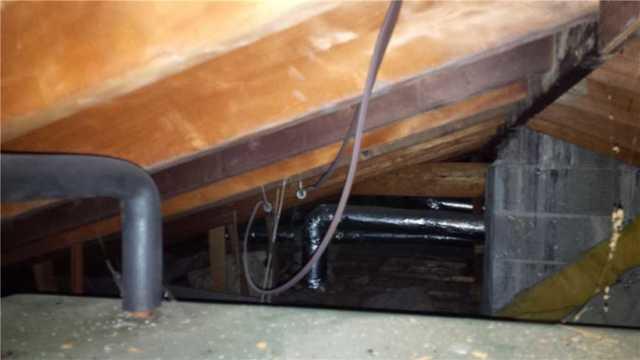
TruSoft Blown Insulation
As a final step in insulating this Berlin, CT attic, we will blow in our TruSoft cellulose insulation. Made from recycled newspapers and treated to be mold resistant and fire resistant, it has a higher R-value per inch than fiberglass and is much less permeable by hot or cold attic air. These homeowners will enjoy a more comfortable home with a lower energy bill.


